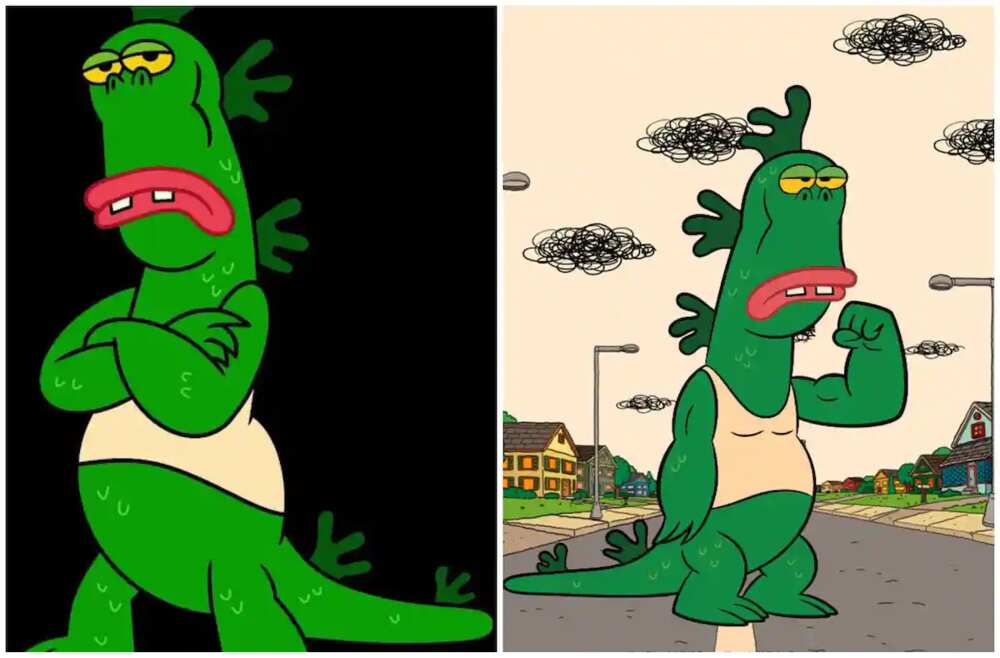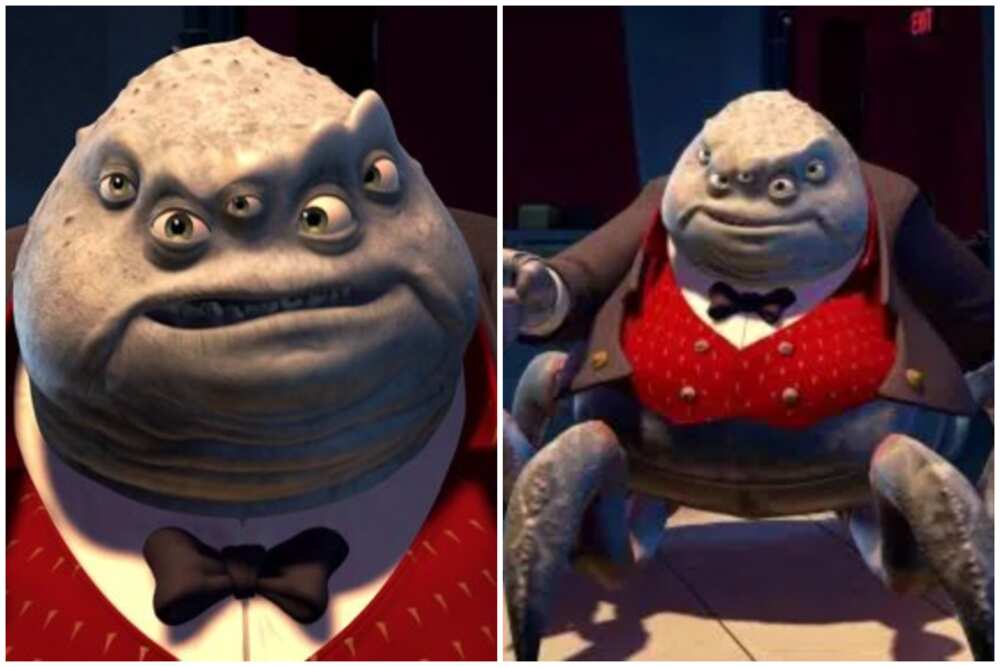When it comes to black ugly characters, we're diving into a topic that’s as complex as it is fascinating. These characters, often misunderstood or misrepresented, hold a significant place in media and pop culture. From classic literature to modern films, they’ve been portrayed in ways that spark both curiosity and controversy. Today, we’re here to break down the stereotypes, uncover the truth, and shine a light on their importance in storytelling.
Now, you might be wondering, why are we even talking about this? Well, my friend, it’s because these characters matter. They reflect societal views, challenge norms, and sometimes, they even make us question our own biases. So, buckle up, because we’re about to take a deep dive into the world of black ugly characters, exploring their origins, impact, and evolution over time.
This isn’t just about analyzing characters; it’s about understanding the layers of representation in media. It’s about recognizing the power of storytelling and how it shapes our perceptions. So, whether you’re here out of curiosity or a desire to learn more, you’re in the right place. Let’s get started!
Read also:Unveiling The Meaning Of Black Crow Myth Mystery And Symbolism
Understanding the Concept of Black Ugly Characters
What Defines a Black Ugly Character?
Alright, let’s get real. When we talk about black ugly characters, we’re not just throwing around words here. These characters are often defined by their physical appearance, personality traits, or the roles they play in narratives. In many cases, they’re portrayed as villains, sidekicks, or comedic relief, but that’s not the whole story. They’re more than just their looks or the stereotypes attached to them.
Think about it. Characters like Shrek, for instance, aren’t exactly conventionally attractive, but they’re beloved because of their depth and relatability. Similarly, black ugly characters can offer a unique perspective, breaking free from the mold of traditional beauty standards. They challenge us to see beyond the surface and appreciate the complexity of their stories.
Historical Context and Representation
Let’s rewind a bit and take a look at how black ugly characters have been represented throughout history. Back in the day, they were often depicted in ways that reinforced negative stereotypes. From minstrel shows to early films, these characters were used as caricatures, perpetuating harmful narratives about race and appearance.
But things have changed, right? Well, sort of. While there’s been progress in recent years, the legacy of these portrayals still lingers. We see it in certain films, TV shows, and even advertisements. The challenge now is to move beyond these outdated tropes and create more nuanced, authentic representations of black ugly characters.
The Impact of Black Ugly Characters on Society
Breaking Stereotypes: A Necessary Shift
Here’s the deal. Stereotypes are dangerous because they limit our understanding of people and their stories. When black ugly characters are reduced to one-dimensional portrayals, it affects how society perceives them in real life. It’s crucial to break these stereotypes and show the world that these characters are just as multifaceted and human as anyone else.
Take, for example, the character of Azog from "The Hobbit." While he’s not exactly the poster boy for conventional beauty, his character is layered and compelling. He’s driven by a desire for revenge, and his motivations make him more than just a villain. Stories like this remind us that appearances don’t define a person—or a character.
Read also:Tiger Perkins Waitress The Rise Of A Phenomenon You Cant Ignore
The Role of Media in Shaping Perceptions
Media has a massive influence on how we view the world around us. When it comes to black ugly characters, the way they’re portrayed in movies, TV shows, and books can either reinforce stereotypes or challenge them. It’s all about the narrative. Are these characters being used as punchlines, or are they given the opportunity to shine as fully realized individuals?
Thankfully, we’re seeing more creators who are willing to take risks and push boundaries. They’re crafting stories that celebrate diversity and challenge the status quo. It’s a step in the right direction, but there’s still work to be done.
Exploring the Evolution of Black Ugly Characters
From Villains to Heroes: A Journey Through Time
Let’s take a trip down memory lane and explore how black ugly characters have evolved over the years. In the past, they were often cast as villains, embodying everything that was perceived as “bad” or “evil.” But as times changed, so did the stories. We started seeing these characters in different roles—sometimes as heroes, sometimes as anti-heroes, and sometimes as complex individuals navigating their own journeys.
One of the best examples of this evolution is the character of Killmonger from "Black Panther." He’s not your typical villain. He’s a man with a vision, driven by a desire for change. His story resonates with audiences because it’s rooted in authenticity and depth. It’s a reminder that black ugly characters can be so much more than what we’ve been conditioned to believe.
The Rise of Nuanced Storytelling
Nuanced storytelling is the name of the game these days. Audiences are hungry for characters who feel real, who have flaws and strengths, and who challenge the norms. Black ugly characters are no exception. They deserve to be portrayed with the same level of care and attention as any other character.
Writers and directors are starting to realize this, and it’s leading to some incredible storytelling. We’re seeing characters who defy expectations, who break free from the mold, and who leave a lasting impact on viewers. It’s a beautiful thing, and it’s only the beginning.
Challenges Faced by Black Ugly Characters in Media
Overcoming Stereotypes and Misrepresentation
Let’s face it. Stereotypes are hard to shake, especially when they’ve been ingrained in media for so long. Black ugly characters often find themselves pigeonholed into roles that don’t do justice to their potential. It’s a challenge that creators need to address head-on if they want to make meaningful change.
One way to overcome this is by giving these characters more agency in their stories. Let them make choices, let them have goals, let them be more than just a plot device. It’s about creating opportunities for them to shine and showing audiences that they’re just as important as any other character.
The Importance of Authentic Representation
Authentic representation matters. It matters because it gives people a chance to see themselves reflected in the stories they love. For black ugly characters, this means being portrayed with respect, dignity, and depth. It means being more than just a side character or a punchline.
Creativity has no limits, and neither should representation. By embracing diversity in all its forms, we can create a world where everyone feels seen and heard. It’s a powerful message, and one that resonates with audiences everywhere.
Black Ugly Characters in Popular Culture
Case Studies: Notable Examples in Film and TV
Let’s talk about some of the most memorable black ugly characters in popular culture. From "The Lion King" to "The Dark Knight," these characters have left an indelible mark on audiences around the world. Take Scar, for instance. He’s not your typical lion, but his cunning and intelligence make him a compelling villain. Or consider the Joker, whose appearance and demeanor are anything but conventional, yet he remains one of the most iconic characters in cinematic history.
These examples show us that black ugly characters can be just as captivating as any other. It’s all about how they’re written, how they’re portrayed, and how they connect with audiences on an emotional level.
The Influence of Social Media on Representation
Social media has changed the game when it comes to representation. Fans now have a platform to voice their opinions, share their experiences, and demand better representation in media. It’s a powerful tool that’s driving change and holding creators accountable.
As a result, we’re seeing more diverse stories being told, and black ugly characters are getting the recognition they deserve. It’s a testament to the power of community and the impact of shared voices. Together, we can create a world where everyone feels represented and valued.
Creating Positive Change: Tips for Writers and Creators
Writing Black Ugly Characters with Depth and Complexity
So, you’re a writer or creator looking to craft black ugly characters that resonate with audiences. Where do you start? The key is to focus on depth and complexity. Give your characters goals, motivations, and flaws that make them relatable. Avoid relying on tired stereotypes and instead, strive for authenticity.
Here are a few tips to help you get started:
- Research extensively to understand the cultural and historical context.
- Create backstories that add layers to your characters.
- Collaborate with diverse voices to ensure accuracy and sensitivity.
- Be open to feedback and willing to make changes when necessary.
Fostering Inclusivity in Storytelling
Inclusivity should be at the heart of every storytelling endeavor. It’s about creating stories that reflect the diversity of the world we live in. By embracing different perspectives and experiences, we can create narratives that resonate with a wider audience.
Here are a few ways to foster inclusivity in your work:
- Include characters from various backgrounds and experiences.
- Challenge traditional narratives and embrace new storytelling techniques.
- Encourage collaboration and open dialogue among team members.
- Celebrate differences and use them to enrich your stories.
Looking to the Future: The Role of Black Ugly Characters in Modern Media
What’s Next for Black Ugly Characters?
The future is bright for black ugly characters. As media continues to evolve, we’re seeing more opportunities for these characters to shine. From streaming platforms to independent films, creators are pushing boundaries and telling stories that challenge the status quo.
It’s an exciting time to be a fan of diverse storytelling. We’re witnessing the rise of new voices, new perspectives, and new narratives that are reshaping the landscape of media. The possibilities are endless, and the potential for growth is immense.
The Power of Representation in a Changing World
Representation matters now more than ever. In a world that’s becoming increasingly interconnected, it’s crucial to celebrate diversity in all its forms. Black ugly characters have a vital role to play in this movement, offering audiences a chance to see themselves reflected in the stories they love.
As we move forward, let’s continue to champion authenticity, inclusivity, and creativity. Let’s create a world where every character, no matter their appearance, has the opportunity to shine and leave a lasting impact on audiences everywhere.
Conclusion: Celebrating the Complexity of Black Ugly Characters
In conclusion, black ugly characters are so much more than their appearances. They’re complex, multifaceted individuals with stories that deserve to be told. By breaking stereotypes, embracing authenticity, and fostering inclusivity, we can create a world where these characters are celebrated for who they are, not just how they look.
So, what can you do? Start by seeking out stories that challenge the norm. Share them with others, engage in conversations, and support creators who are pushing boundaries. Together, we can make a difference and create a more inclusive, diverse world of storytelling.
And hey, don’t forget to leave a comment or share this article if you found it helpful. Let’s keep the conversation going and make sure everyone’s voice is heard. Thanks for reading, and we’ll see you in the next one!
Table of Contents
- Understanding the Concept of Black Ugly Characters
- The Impact of Black Ugly Characters on Society
- Exploring the Evolution of Black Ugly Characters
- Challenges Faced by Black Ugly Characters in Media
- Black Ugly Characters in Popular Culture
- Creating Positive Change: Tips for Writers and Creators
- Looking to the Future: The Role of Black Ugly Characters in Modern Media


